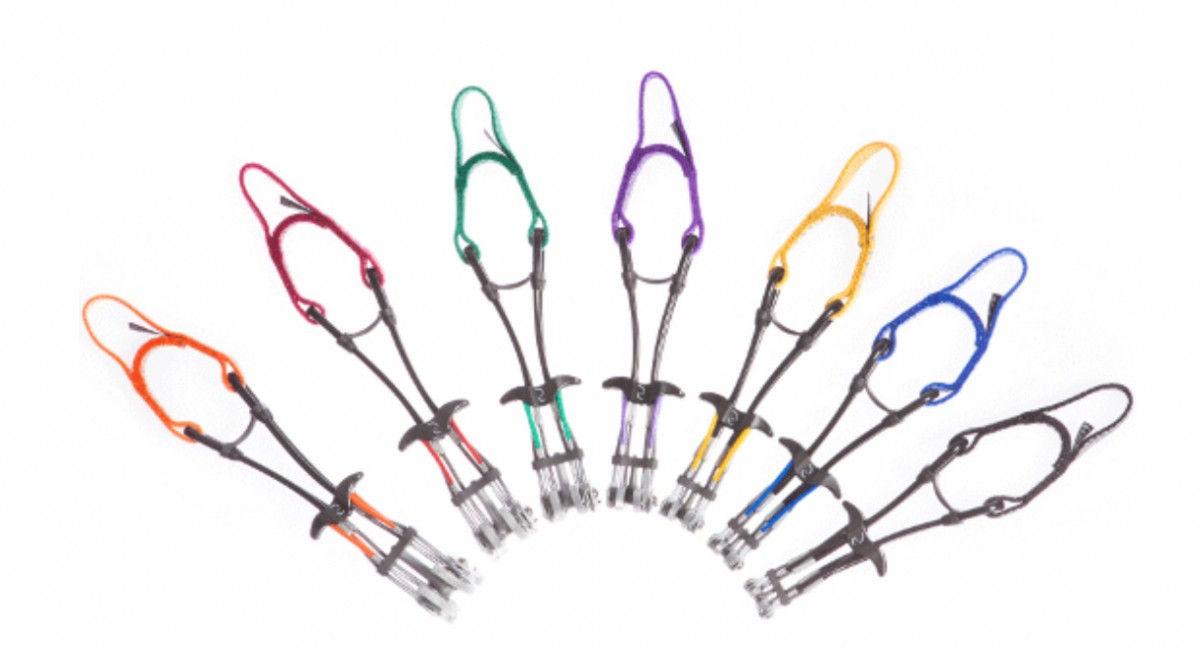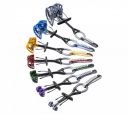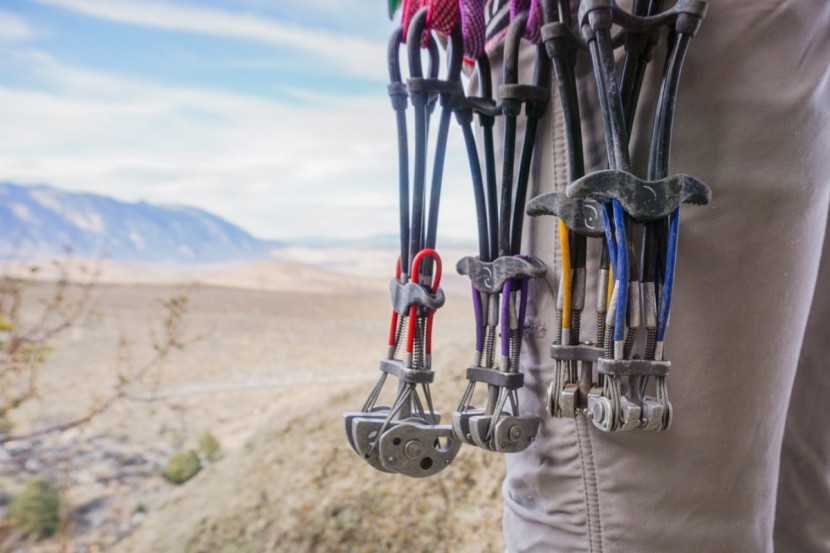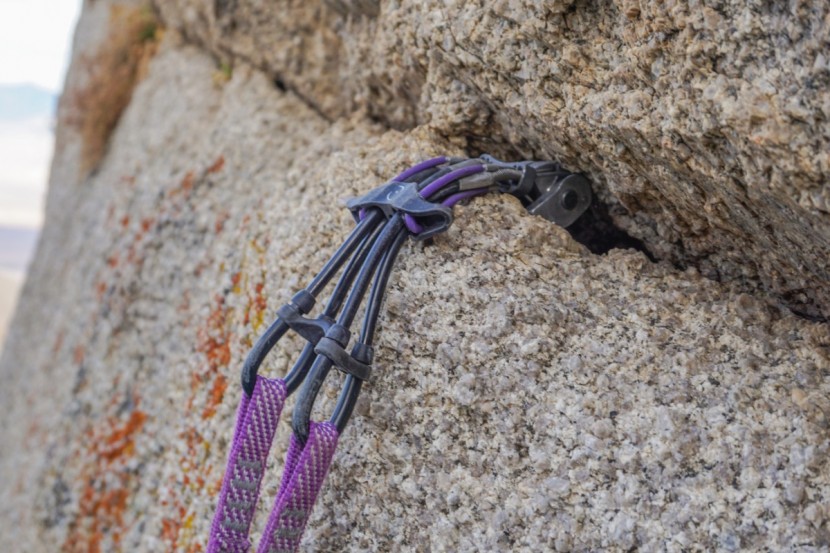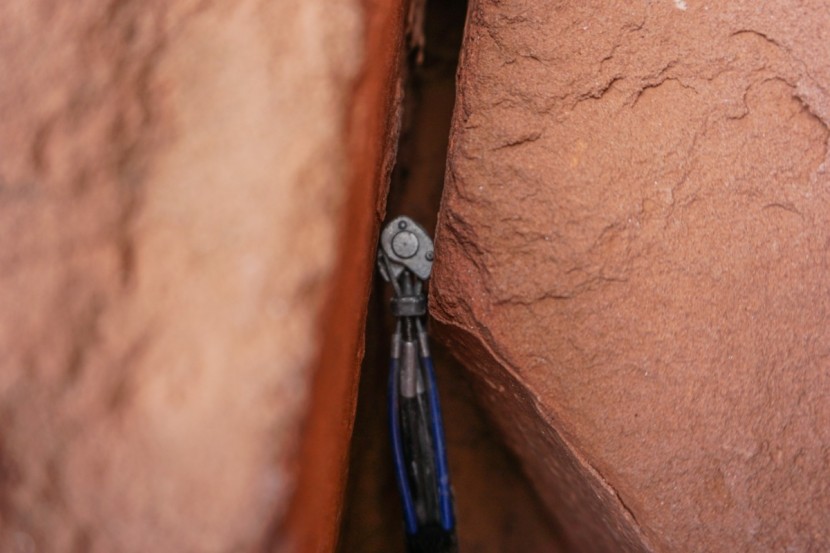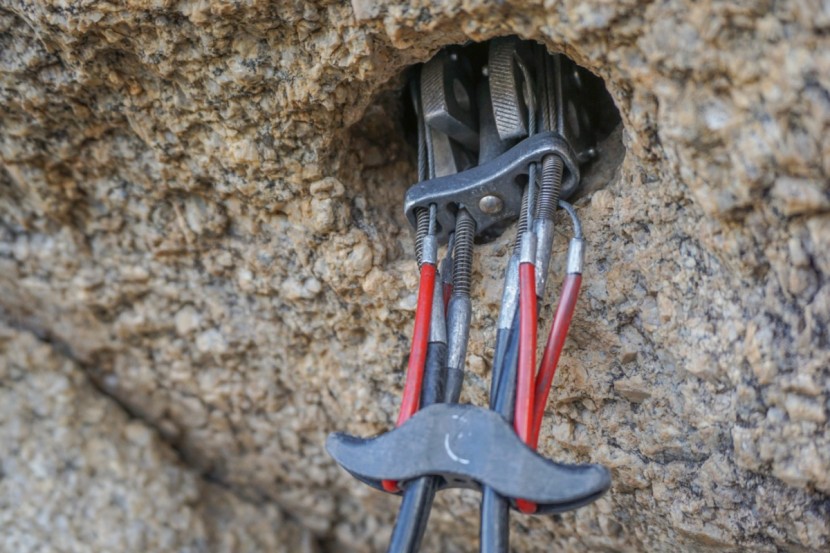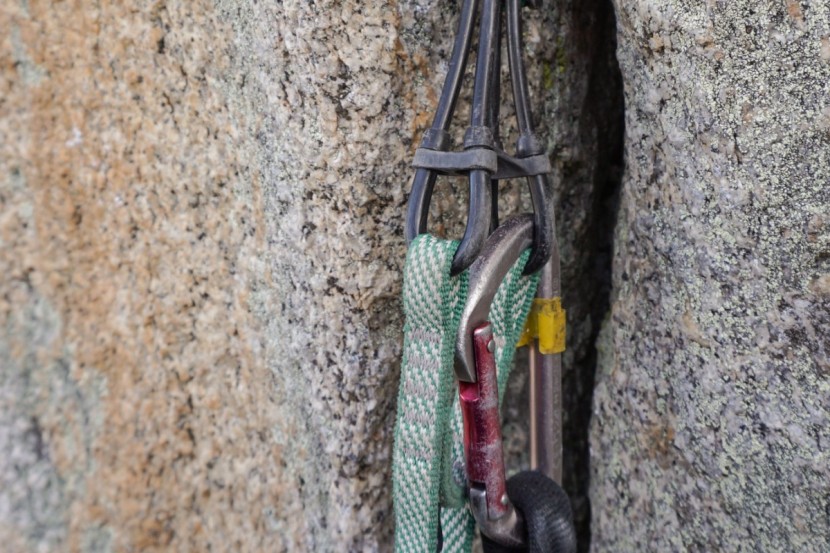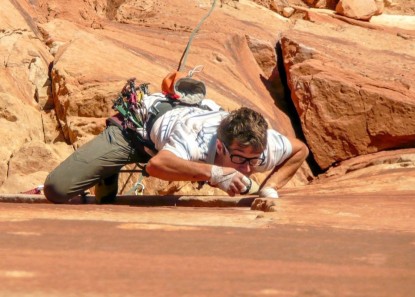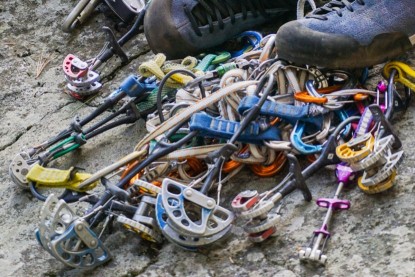Totem Cam Review
Our Verdict
Compare to Similar Products
 This Product
Totem Cam | |||||
|---|---|---|---|---|---|
| Awards | Best for Aid Climbing | Best Overall Small Camming Devices | Best Overall Medium and Large Camming Devices | Best for Building Your Rack | Best Bang for the Buck -- Small Cams |
| Price | $94.95 at Backcountry Compare at 2 sellers | $89.95 at REI Compare at 2 sellers | $76.96 at Backcountry Compare at 3 sellers | $84.95 at REI Compare at 2 sellers | $48.96 at Backcountry Compare at 3 sellers |
Overall Score  |
|||||
| Star Rating | |||||
| Bottom Line | Totems are the best cam for aid climbing and hard-to-protect free climbs | A top choice for smaller sizes due to the widest range and incredible ease of use | These cams are awesome for long Yosemite free climbs and Indian Creek splitters | These are the most popular cams at Indian Creek due to their great range and durability | The super light, narrow headed Ultralight Master Cam have you covered in small cracks and flares |
| Rating Categories | Totem Cam | Black Diamond Camal... | Black Diamond Camal... | Black Diamond Camalot | Metolius Ultralight... |
| Free Climbing (20%) | |||||
| Weight (15%) | |||||
| Range (15%) | |||||
| Horizontal Cracks (15%) | |||||
| Tight Placements (15%) | |||||
| Durability (10%) | |||||
| Walking (5%) | |||||
| Aid Climbing (5%) | |||||
| Specifications | Totem Cam | Black Diamond Camal... | Black Diamond Camal... | Black Diamond Camalot | Metolius Ultralight... |
| Weight (1 inch size piece) | 3.35 oz | 2.8 oz. | 2.6 oz | 3.28 oz | 2.3 oz |
| Range (inches) | .46-2.52" | .29" -1.66" | .61-4.51" | .54-7.68" | .34-2.81" |
| Sling Length (inches) | 4.6" | 3.75" | 3.75" | 3.75" | 3.75" |
| Single or Double Axle | Single | Double down to .3 | Double | Double | Single |
| Extendable Sling | No | No | No | No | No |
| Sling material | Dyneema | Dynex | Dyneema | Nylon | Dyneema |
| High Clip in for Aid | Yes | Yes | Yes | Yes | No |
| Cam Stops | No | Yes, down to .3 | Yes | Yes | Yes |
Our Analysis and Test Results
Placement for placement, Totems protect as well or better than any other cams in our review. Some other cams might be better in horizontal placements or are lighter, but it takes six offset sizes to match the range of the same size run of Totems. That said, most of our testers would prefer to opt for the Black Diamond C4s as the backbone of their racks, because they take up less space on their gear loops, are easier to place when they're pumped, easier to buy in the US, and more affordable, while adding on a set or two of Totems as a supplement.
Free Climbing
Due to their unique shape and ability to fit where no other cam will, these cams are a great choice for difficult, cutting-edge free climbing, and they've even been used to free difficult sport routes without using the bolts.
If you're pushing yourself on single pitches, the Totems are an excellent choice. If you're climbing multi-pitch or easier alpine climbs, other more common cam designs will do the trick while weighing you down less. The stems on the Totems are bulkier and take up more space on our gear loops than average designs, so we wouldn't choose them when planning to double or triple up on sizes for climbing desert splitters which are mostly parallel anyway.
Weight
A full set of Totems weighs in at 24.9 ounces. When you compare the same size run of other cams in this review, even those that include more cams to cover the same amount of size range, the Totems are heavier overall.
Even the standard Black Diamond C4s are lighter than a similar run of Totems, making them the heaviest in our review. A few of our testers said that they didn't care how much Totem cams weighed because they work so well, and none of our testers would describe Totems as “heavy”. Because of their dual stem, some of our testers thought the Totem Cams felt bulky on their harnesses.
Range
A set of seven cams covers cracks from 11.2 mm to 64.2mm.
Using a very BD-esque color scheme, we were happy to see the familiar red and yellow (though totem says orange) hand sizes, a green and purple for fat fingers, a yellow size similar to a yellow Alien, a blue size similar to the Black Diamond .3, and a black size that is pretty close to the yellow BD X4. While the colors are not a perfect match, you won't have to learn an entirely new color/size correlation once you integrate a rack of Totems into your arsenal.
Horizontal Cracks
While not as flexible as the finger-sized cams that have the most flexible stems, Totems are at the same time less stiff than cams with stems encased in semi-rigid plastic, making them more convenient for horizontal placements.
The hand sizes are especially useful for these types of placements, because most of the alternatives in this larger size only come with fairly rigid stems.
Tight Placements
The Totem Cams have very close to the narrowest heads in our entire review, a great advantage for fitting into shallow and tight placements.
We also find that their independently loading lobes make them more secure in oddly shaped holes. Their oblong-shaped lobes tend to have more contact points with the rock. This makes for a stronger placement but also makes these cams a bit more difficult to extract if they get stuck since it's harder to get a nut tool between the cam lobe and the rock to pry it out. Experiment on the ground, place your cams carefully, and this won't be an issue.
Walking
The best way to prevent cams from walking is to extend them with an alpine draw.
Your next defense against the dreaded walk is a flexible stem, which as previously discussed, them Totems have. Finally, strong springs that push the cam lobes into the rock keep the cam in place and prevent the cam from slipping out of a proper placement. The spring-loading action on the Totems does the trick, and the Totem springs have more resistance, preventing walking, than most of the small finger-sized cams we tested them against.
Durability
The plastic stems on these cams tend to kink or stay in a bent position after being loaded repeatedly in pockets and pin scars.
The more flexible metal stems found on other finger sized and smaller units are less likely to get stuck in a bent position. The Totem's most significant vulnerability lies in where the cables wrap around the top of the lobe, where the cables can rub between the lobe and the rock, eventually wearing through the cables.
Aid Climbing
Totem cams are total game changers when it comes to aid climbing.
The double stem allows you to load each side independently. This permits you to load just two lobes in super shallow placements. While you don't want to take a fall on just two lobes, they're great for body weight pieces, holding where no other cam can securely fit. Because each side is independent, each Totem cam can function as an offset, holding in flares better than any other cam. These cams also have high and low clipping points, so you can clip in high for a better reach, or clip in low for less rope drag or to prevent the cams from walking.
Value
¡Muy expensivo amigos! These rad cams ain't cheap and will set you back about a month's worth of rent for a whole seven cam set. While there are a handful of U.S vendors online, they can still be a bit hard to find in shops. Any valley wall climber would go on a diet of ramen and King Cobras, maybe even get a job, to save up for a set of Totems.
Conclusion
Our testers feel that the Totem Cams are the most versatile model on the market. Since they were first introduced they've proven a worthy challenge to the Black Diamond Cam supremacy. So many aspects of these cams, the lobe shape, the stem flexibility, and the narrow head with, totally breaks the mold of modern cam design. We're excited to see them become more available in the US, where a slew of hard, gear protected climbs will emerge in their wake.


